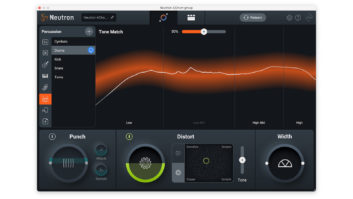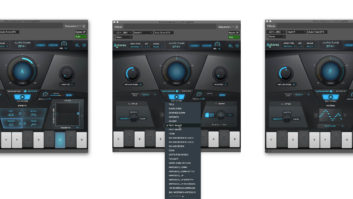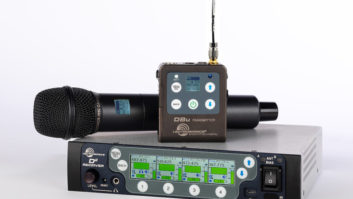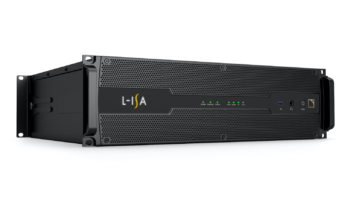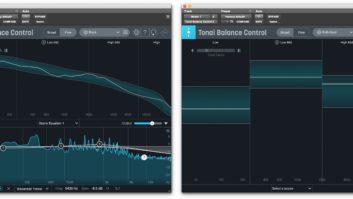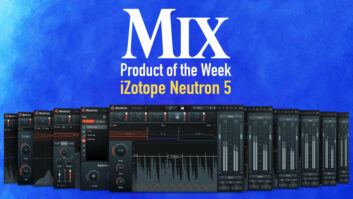iZotope has been at the forefront of incorporating artificial intelligence into music software. Many of its major titles, including RX, Ozone, Nectar and Neutron, now have “assistant” features that analyze your audio and offer settings suggestions.
Just last week, iZotope released Neutron 3, the latest version of its AI-infused modular channel-strip plug-in. Neutron 3 is available in iZotope’s usual tiered versions: Advanced ($299), Standard ($199) and Elements ($99). As you would expect, Advanced is the most feature-rich of the three, and Elements the least. You can compare the versions here.
The new version offers faster processing, lower CPU load and some compelling new features. Perhaps the most newsworthy of those is the Mix Assistant, and in particular, the Balance function. In the Advanced version of Neutron 3, it takes raw tracks or stems and automatically balances them as a starting point for your mix. You need to instantiate either Neutron (which iZotope refers to as the “Mother Ship”) or the included Relay plug-in on every track first (you need at least one track with Neutron). Then you play your mix with Neutron listening, and it balances the gain of the various instruments.
Read more Product of the Week: Waves Submarine.
I’m not sure how I feel about this feature. For me, getting a rough balance is the easy part of mixing. It’s the process of going from that to a finished-sounding mix that’s the most challenging. What’s more, even if it was a big problem for me, I’m not sure I’d want software that could do it for me, because how would I ever learn, then?
That said, I assume iZotope is aiming this at recording musicians who are novices at mixing, and who find all aspects of the process to be challenging. For such folks, perhaps getting an automatic “starting point” will be helpful. But if you have trouble getting a rough balance, how are you going to ever finish a mix?
The Balancing feature is tied into iZotope’s Visual Mixer feature (a free plug-in that’s included). It puts icons representing your tracks in a virtual mixing space, where the vertical axis represents volume and the horizontal panning. Each icon has handles that can be used for making a track’s image wider.
Neutron also offers Track Enhance (one part of the Mix Assistant feature), which was known as the Track Assistant in Neutron 2. It analyzes your track and automatically detects whether it’s a voice or a particular instrument. Then, based on some criteria that you choose, it creates a “starting point” setting, using whichever combination of the channel strip components it deems necessary. It’s basically creating a preset for you based on an analysis of your audio.
To me, this function is a lot more valuable, particularly for saving time, than the Balance feature, because it’s using an analysis of the audio and its built-in AI to come up with a channel-strip setting that can have up to seven processors in it. My experience with Neutron is that the “starting points” are usually quite useful and definitely speed up the mixing process.
The modules in Neutron include an EQ, two compressors, a transient shaper, an exciter a gate—all of which are multiband—and the newest addition, the Sculptor. It’s a multiband spectral shaper that uses real-time compression and EQ to make your track fit the spectral profile for the type of source it is.
For the Sculptor, you choose the source type from a drop-down menu, and it tries to match your track to its profiles. You can use the “all-purpose” settings, which include choices like Add Fullness, Add Polish, Punch, and Instrument Bus. Or, you can pick a source-specific preset from various options for common instruments like bass, guitar, drums, keyboards and vocals.
For example, the Guitar category offers Acoustic Guitar, Clean Electric and Distorted Electric. The Voice category offers Dialog or Vocals. You can even choose presets for brass and strings. Once you’ve selected the source type, you can modify the settings with several parameters, impacting the intensity of the setting, the tone and the speed of the compression attack and release. Sculptor is a useful and unique tool to have in a channel strip.
In Neutron 3, iZotope has improved the Masking Meter feature, as well, redesigning its interface and making it easier to find and correct frequencies on different tracks that are masking each other in the mix.
Both the main Neutron 3 plug-in and the free included Relay and Visual Mixer plug-ins can communicate with each other in various interactions (volume, panning, carving out space with the Masking Meter) across your mi, thanks to iZotope’s Inter Plug-in Communication technology.
Space doesn’t allow me to go into all of Neutron 3’s features here—I’m already way over my normal word count—but, suffice to say, it offers an impressive amount of processing power through its versatile collection of modules. How much you use the AI-infused “assistant” features is entirely up to you. But without question, Neutron 3, particularly in its Advanced and Standard versions, is a deep, powerful and sophisticated channel strip.
